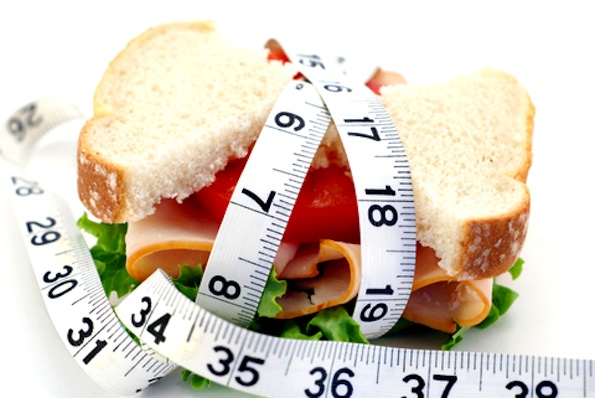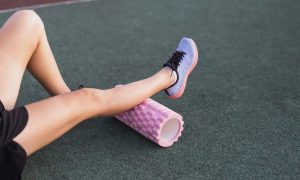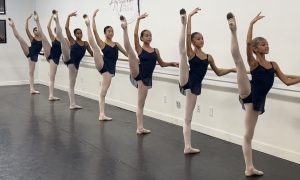By Emily C. Harrison MS, RD, LD.
www.dancernutrition.com
Want better jump height, more endurance, improved brain function and better fat burning? Then carbohydrates can be your best friend.
Should I eat a high protein, low carb diet?
There always seems to be yet another new bestselling, yet unscientific diet trend that touts low carb, high protein eating. These diets are not good for anyone, but this is especially so for the type of activity that dancers do. Certainly adequate protein is important, but the body would prefer to spare it for important physiologic functions, not burn it as fuel. Carbs provide the type of fuel that the muscles need for dance. High protein diets can lead to lower bone mineral density and increased risk for long-term diseases. Plus, such diets have not consistently shown to help with weight management over the long term 1,2,3.
Carbs can be found in wholegrain pasta, bread, rice, quinoa, barley, dairy, all vegetables and all fruits. Of course, you should avoid simple sugars in sweets, juices, soda, refined grains and baked goods. Sugar won’t give you enough energy to get through barre, but have a simple sandwich or pasta with veggies, and you’ll dance strong all the way through grande allegro. You won’t get that same level of sustained energy from a protein shake, or a big piece of meat before class.
Weight management and carbohydrates
The main reason people believe the hype about low-carb diets like Atkins, South Beach and Paleo diets is that they do aid in weight loss…. at first. For most people, much of the weight is gained back often with a few extra pounds to spare1. Yo- yo dieting is not what dancers need, especially when it is at the expense of their health or performance. Quick weight loss, a hallmark of low-carb diets, can lead to loss of lean mass (muscle). Going on any very low-calorie diet and losing muscle means losing the most metabolically active tissue the body has. In addition to lowering the metabolic rate, the body adjusts to the restricted calories, setting one up for an endless cycle of gaining and losing. A better strategy would be to limit simple sugars and eat smaller more frequent meals and snacks with fruits, vegetables, whole grains and legumes as the foundation.
Carbohydrates and performance
There is no better fuel for athletic performance and brain function than carbohydrates. Complex carbs in whole grains, vegetables and fruits give the muscles a prolonged source of energy. It has been found that giving athletes carb-based snack bars between meals results in better energy output and anaerobic power, while keeping weight the same and lowering body fat4.
In one study carbohydrate intake prior to exercise was shown to be as effective in improving repeated jump height as the supplement creatine 5. The carb group didn’t gain weight but the creatine group did5. The American College of Sports Medicine recommends that athletes get 55-60% of their total calories from carbohydrates, and whole grains are also important sources of fiber, B-vitamins, iron and folate.
How much, and when?
Here are a few real-life examples:
Everyone is different, but if 2000 calories are needed then 55-60% should come from carbs. That is about 275-300 grams because carbs have 4 calories per gram. Carb needs can also be calculated based on grams per kilogram of body weight. In general, recommendations are 5-8 g/kg depending on intensity of activity. So a 120lb (54.5kg) female dancer would need at least 272 grams per day.
Examples:
1 piece of bread: 12-17 grams
1 apple: 25-30 grams
1 cup quinoa or brown rice: 39-45 grams
1 cup green beans 8 grams
Long, busy class and rehearsal days
Plan ahead so that carbs and protein are eaten within one hour post exercise the day before. Carbs should be eaten in the range of 30-60 grams per hour during the rehearsal day.
Show or audition day
If a dancer is feeling nervous and doesn’t want food sitting on their stomach, then they should be well-fueled 3-4 hours prior to the show/ audition. Then an hour or so before, opt for easy to digest carbs like pretzels, crackers or a sports beverage. High-fat and high protein foods take a bit longer to digest, so eat these in moderation if you’re nervous. Re-fuel as needed if it is a long show.
Rest day
On well-deserved days off, a dancer still needs carbs but not in the same amount as a workday. Cut back just a little bit, and eat lots of fruits and veggies.
The subject of carbohydrate intake is big, and can’t be covered in one article. Check out my earlier Dance Informa article on glycemic index for additional information.
Emily Harrison
 Emily Cook Harrison MS, RD, LD
Emily Cook Harrison MS, RD, LD
Emily is a registered dietitian and holds both a bachelor’s and master’s degree in nutrition from Georgia State University. Her master’s thesis research was on elite level ballet dancers and nutrition and she has experience providing nutrition services for weight management, sports nutrition, disordered eating, disease prevention, and food allergies. Emily was a professional dancer for eleven years with the Atlanta Ballet and several other companies. She is a dance educator and the mother of two young children. She now runs the Centre for Dance Nutrition and Healthy Lifestyles. She can be reached at emily@dancernutrition.com www.dancernutrition.com
Sources:
- Four-Year Follow-up after Two-Year Dietary Interventions N Engl J Med 2012; 367:1373-1374. October 4, 2012.
- Campbell TC, Campbell TM. The China Study. 2006. Benbella Books
- Rohrman S, et al. Meat consumption and mortality – results from the European Prospective Investigation into Cancer and Nutrition. BMC Medicine, 2013.
- Benardot D, et al. Between Meal Energy Intake Effects on Body Composition, Performance, and Total Caloric consumption in athletes. Medicine & Sci in Sports and Exercise V37. 2005.
- Koenig C, Benardot D, Cody M, Thompson W. Comparison of creatine monohydrate and carbohydrate supplementation on repeated jump height performance. Journal of Strength and Conditioning Research. 2008;22
Photo (top): © Phinizrl, Dreamstime.com














Pingback: Choosing the Right Energy Foods | Dance Informa Magazine